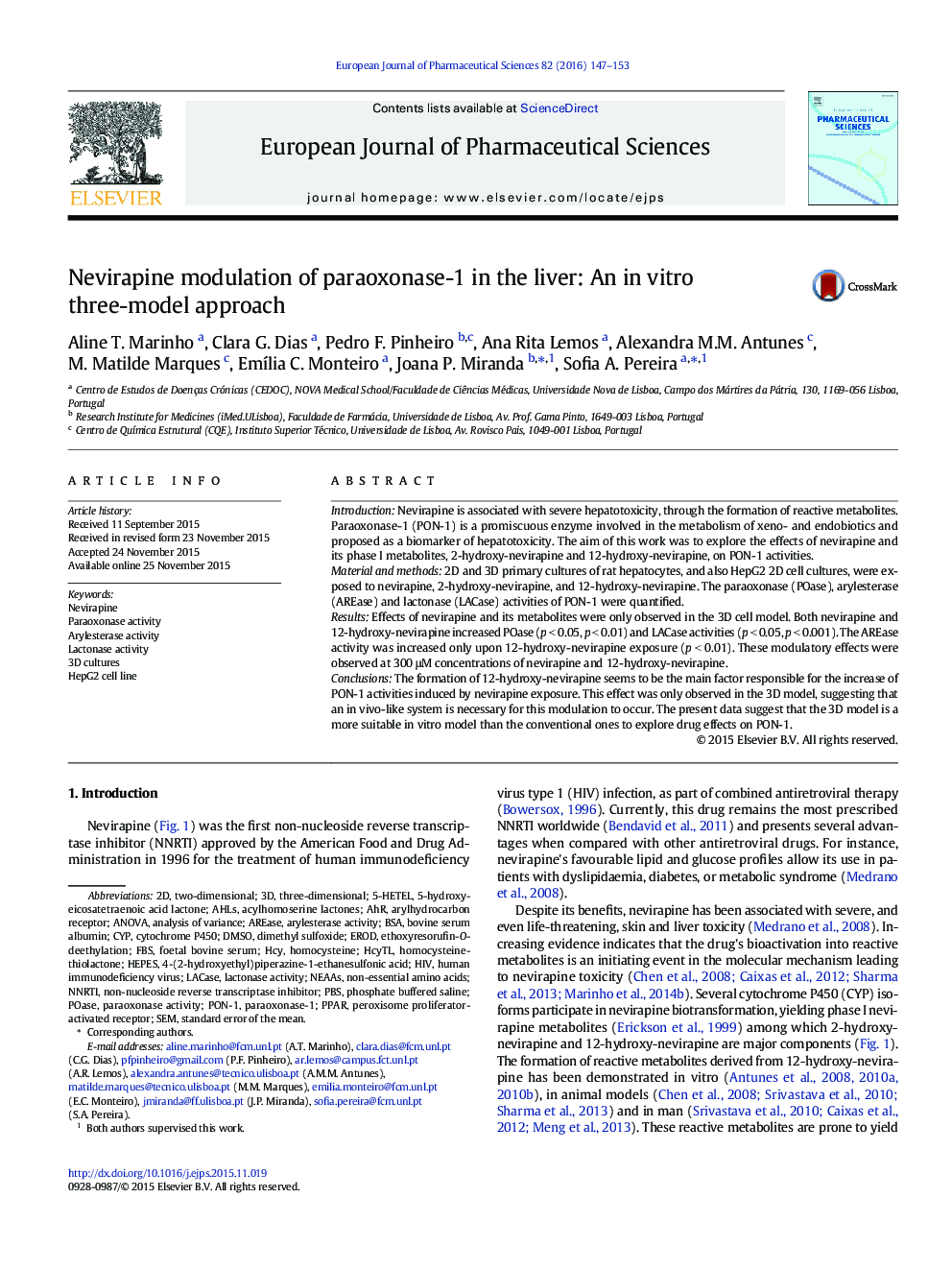| Article ID | Journal | Published Year | Pages | File Type |
|---|---|---|---|---|
| 2480180 | European Journal of Pharmaceutical Sciences | 2016 | 7 Pages |
IntroductionNevirapine is associated with severe hepatotoxicity, through the formation of reactive metabolites. Paraoxonase-1 (PON-1) is a promiscuous enzyme involved in the metabolism of xeno- and endobiotics and proposed as a biomarker of hepatotoxicity. The aim of this work was to explore the effects of nevirapine and its phase I metabolites, 2-hydroxy-nevirapine and 12-hydroxy-nevirapine, on PON-1 activities.Material and methods2D and 3D primary cultures of rat hepatocytes, and also HepG2 2D cell cultures, were exposed to nevirapine, 2-hydroxy-nevirapine, and 12-hydroxy-nevirapine. The paraoxonase (POase), arylesterase (AREase) and lactonase (LACase) activities of PON-1 were quantified.ResultsEffects of nevirapine and its metabolites were only observed in the 3D cell model. Both nevirapine and 12-hydroxy-nevirapine increased POase (p < 0.05, p < 0.01) and LACase activities (p < 0.05, p < 0.001). The AREase activity was increased only upon 12-hydroxy-nevirapine exposure (p < 0.01). These modulatory effects were observed at 300 μM concentrations of nevirapine and 12-hydroxy-nevirapine.ConclusionsThe formation of 12-hydroxy-nevirapine seems to be the main factor responsible for the increase of PON-1 activities induced by nevirapine exposure. This effect was only observed in the 3D model, suggesting that an in vivo-like system is necessary for this modulation to occur. The present data suggest that the 3D model is a more suitable in vitro model than the conventional ones to explore drug effects on PON-1.
Graphical abstractFigure optionsDownload full-size imageDownload high-quality image (162 K)Download as PowerPoint slide
